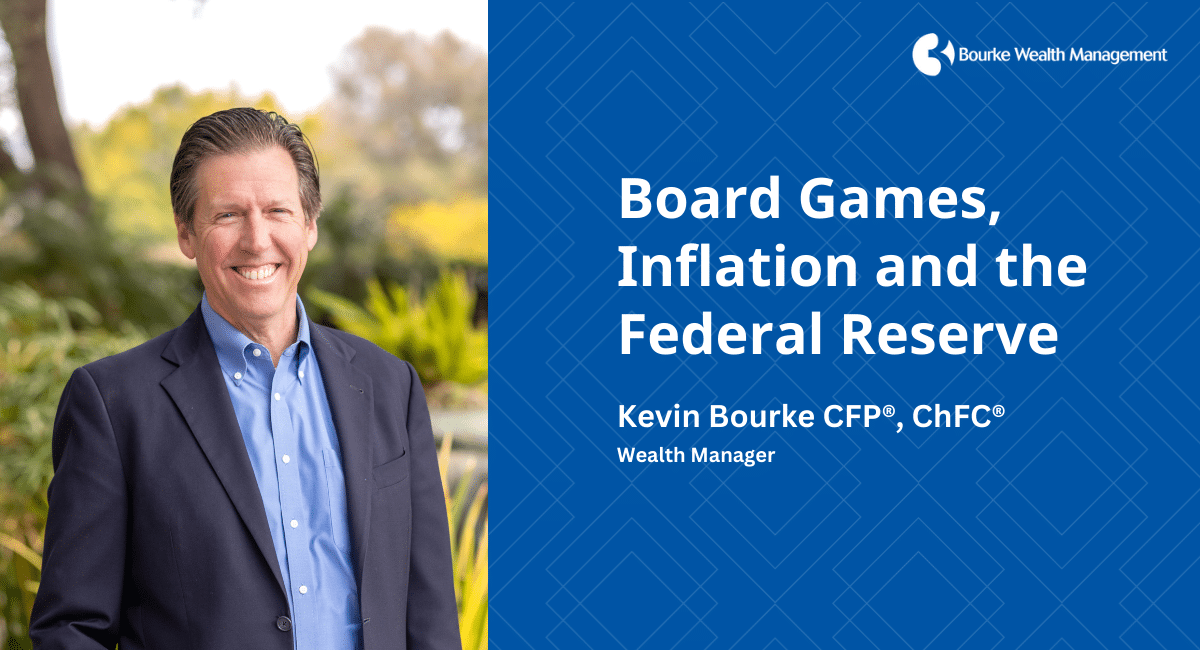When I was young, we played Monopoly endlessly. Monopoly can be played for hours, sometimes days, if not for one challenge.
What do you do when you run out of money?
Our solution was to buy another Monopoly game. My mom found one at a yard sale, made sure it had plenty of Monopoly money and brought it home.
Let’s call this ‘printing money.’
After a while, this also led to ‘side deals,’ where someone with too much property but too little cash would sell a property to another player – usually at a higher price than indicated on the board.
Let’s call this ‘inflation.’
You may have heard that the government is ‘printing money’ and wondered what that means. Is there a printing press somewhere disseminating scads of bills? No.
The expression ‘printing money’ often means that the Federal Reserve is buying securities out of the same public markets as you and me.
If you or I buy a bond, our bank account balance decreases to pay for the bond. The Federal Reserve doesn’t have an account at a bank that decreases when they make a purchase. Therefore they are ‘creating’ money as they buy securities, otherwise known as ‘printing money.’ By doing so the Fed is adding to the existing supply of money in the economy.
Why is this important? Because many observers say that the Federal Reserve has ‘printed’ so much that money is now sloshing around the economy, chasing the same amount of goods and services (actually fewer goods because of supply chain issues which I’ll address below) and that prices are naturally going to rise (remember how prices went up on Monopoly when the amount of real estate was fixed but more money was available?).
Like all analogies this one will break down at a certain point but hopefully it helps illustrate what is happening today.
What else is being blamed for inflation? The supply chain, wage growth, housing, oil, the list is endless.
Let’s just focus on supply chain. What is this ‘supply chain’ and why is it in the news all the time? An example of a supply chain would be semiconductors. Many are made in Asian factories. Many Asian factories closed during Covid. Now there aren’t enough semiconductors to go around. Also, when they finally get shipped across the Pacific to the West Coast, they sit on ships miles out to sea waiting to be unloaded at the docks. This is an oversimplification but gives you an idea of what is happening with supply chains.
A full 80% of the overshoot in inflation, meaning the inflation number reported above what we would normally expect, is due to supply constrained goods.¹ In fact, used car prices were up nearly 40% from the beginning of the pandemic through October 2021 and account for much of the surprisingly high inflation numbers.²
This means bottlenecks around the globe that are hindering the free flow of goods from manufacturer to consumer need to be cleared up before we can expect to see inflation recede meaningfully. Nobody wants trade slowed so you can be certain that companies are figuring out workarounds as quickly as possible.
The Federal Reserve has two primary goals, to keep Americans employed and to keep a handle on inflation. Based on their actions you can expect interest rates to go up. In fact, interest rates tend to move in multi decade cycles and have been in decline since 1982, forty years. Supply chain aside it’s likely interest rates will move steadily higher for the foreseeable future regardless.
What to do? While there is never a perfect solution, we have been modifying our portfolios for months now to account for an uptick in inflation. If you find this topic interesting and would like to chat about it in more detail feel free to give me a call.
- Goldman Sachs 2022 Outlook “Broadly Specific”
- https://fortune.com/2021/11/01/used-car-prices-high-carmax-2021/



